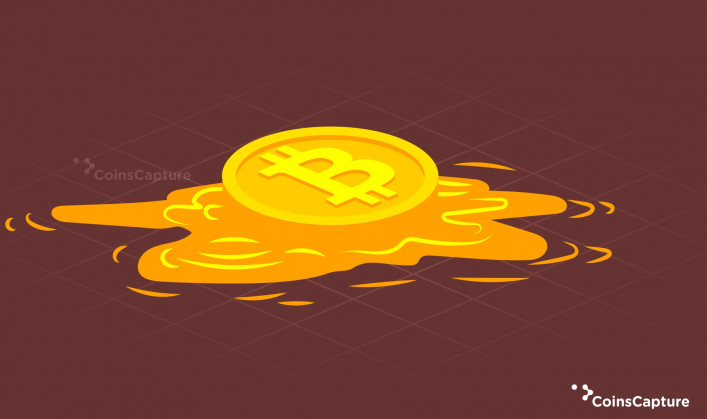29 July 2025
What is Liquidation and How It Can Be Avoided?
As a result of the Crypto market's significant fluctuation, liquidations are prevalent. Cryptocurrencies like Bitcoin and other Cryptocurrencies are known for their volatility and high risks. In contrast to conventional asset classes such as equities and commodities, the fluctuation of blockchains gives a potential for traders to earn big gains. As the coronavirus pandemic raged in 2020, Bitcoin surged by 160 percent compared to a 14 percent rise in the S&P 500 as well as a 22 percent rise in gold.
Also Read: 10 Metaverse Influencers To Follow In 2022
Volatility is a well-known characteristic of Cryptocurrencies. As a result, they're great candidates for the hatchet. In Cryptocurrency trading, liquidation happens when a trader is unable to fulfill their leveraged position's margin requirements. Investors may enhance their trading capital by taking out a loan from an exchange. Increasing trading positions by leveraging or lending money is a very hazardous activity, but it may improve the possibility for profit. If the market goes against your leveraged position, you might lose your original margin or money.
Also Read: 5 Best Defi Development Companies
What Is Liquidation?
Because of the partial or whole losses of the investor's original margin, the liquidation is nothing but an exchange that may aggressively cancel a dealer's leveraged position in Cryptocurrency markets. Trades with leverage come with a significant level of risk, and you run the danger of losing all of your reserve original margin if the market moves against you. The United Kingdom, for example, considers it so hazardous that it has prohibited Cryptocurrency exchanges from selling leveraged trading products to individual investors in order to safeguard beginner dealers from ruining their whole invested cash.
What Is Crypto Margin Trading?
It is possible to acquire funds from a Cryptocurrency exchange in order to trade a larger quantity of assets. Improved purchasing capacity and better gain prospects may be gained by traders by using this strategy. By definition, leverage is lending money to take on more risk than one's own resources allow. Leveraged holdings, on the other hand, may be rapidly liquidated if the market turns against you. Margin trading aims to set up an enormous number of Cryptocurrency or conventional cash as security in order to initiate a trading account. In the event of a bad deal, this money protects the borrower. There are two types of margins: "Maintenance" and "Maintenance Margin".
How To Avoid Liquidation?
To reduce the risk of getting liquidated while utilizing leverage, a few different strategies may be used. "Stop loss" is only one of the alternatives available to you. Any time an asset's price falls below some predetermined level, an investor may use stop-loss orders, often known as "stop orders," to direct the exchange to sell the asset and collect their losses. Placing a stop loss requires input of the stop price, sales price, and size of the trade. If the market rate meets your stop price, the stop order immediately triggers and trades the asset at the cost and quantity specified. Selling at a cheaper cost than one's stop price might increase the likelihood that a transaction will be filled if an investor fears that the market will move swiftly against them. In order to keep losses to a minimum, a stop loss is used.
How Does Crypto Liquidation Happen?
The process of liquidation occurs whenever an exchange or commission shuts out a dealer's position as it is no more able to match its margin requirements. To start and retain a position, a trader must invest a certain proportion of the overall transaction value with their stockbroker. Positions are automatically liquidated if an investor's margin account drops under a pre-agreed threshold with the marketplace. Margin calls are sent when your leveraged position hits its liquidation level, that implies you will have to keep putting up extra margin. When traders employ a lot of leverage, liquidation is more common in future agreements. At this point, you have 2 alternatives: either you may increase your margin to meet the broker's leverage requirements, or your trade will be immediately closed.
Where To Set A Stop Loss?
One of the foremost crucial concepts in margin trading is risk control. Profits are secondary; losses should be kept to a minimum at all times. There is no such thing as a foolproof trading strategy. Whenever the market does not really go according to plan, you need to have procedures in place to keep you afloat. A stop-loss range of 2-5 percent of your transaction shape is frequently advised when placing stops. However, there really is no perfect guideline for this. It's also common for some investors to place a stop loss slightly underneath the recent swing low, assuming that it isn't low enough to put you out of business. Furthermore, you need to keep an eye on the magnitude of your trades and the risks they entail. The more leverage you have, the more likely you are to be taken over.
The Bottomline
Get familiar with liquidation as well as how to prevent it before you start trading in Cryptos. Due to a lack of margin, a Cryptocurrency trader is forced to liquidate their stake. Lending from such an exchange increases the number of money merchants have available to trade. It's possible to expand trading positions while using borrowed money as leverage. It's a very dangerous action, and it's possible that your losses may be exacerbated by it. Though liquidation may be avoided with careful attention to your margin, prudent leverage levels, as well as the proper use of trading instruments like stop-loss and limit orders.
Disclaimer: The author’s thoughts and comments are solely for educational reasons and informative purposes only. They do not represent financial, investment, or other advice.






